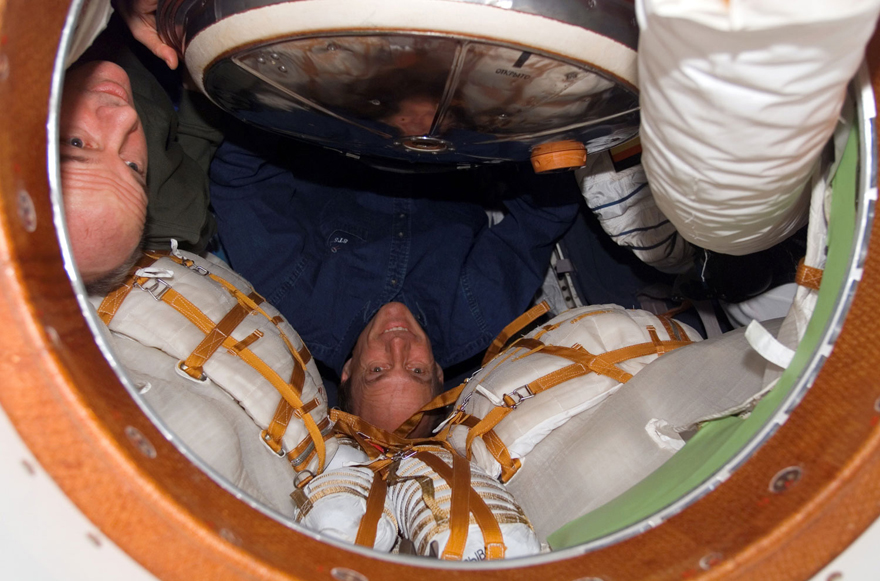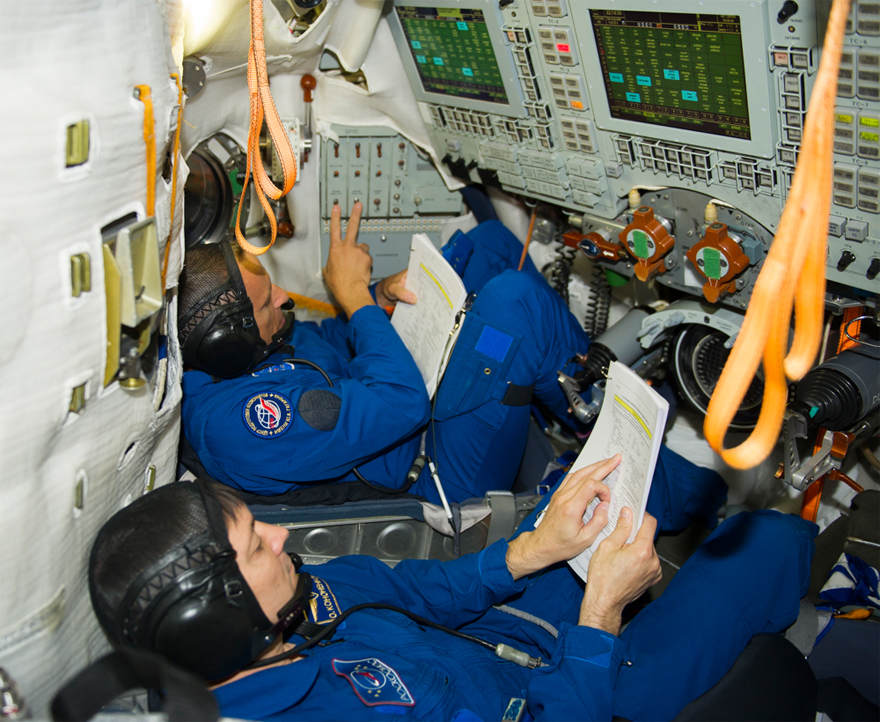Crewmembers and their responsibilities
The Soyuz vehicle can accommodate a crew of two to three:
- a commander
- a flight engineer and co-pilot
- a second flight engineer, cosmonaut researcher or passenger
Commander
The commander sits in the middle seat, and assumes primary responsibilities for mission completion, crew activities and crew safety.
The commander is also responsible for all Soyuz manoeuvres:
- controls and monitors vehicle operations (ascent, rendezvous, approach, docking, descent, manual attitude manoeuvres)
- performs all vehicle system manual and semi-manual modes
- maintains ground communications
- monitors general system operation and vehicle condition
- assures proper functioning of personal life support system
- oversees vehicle disembarkment following landing or splashdown
In an emergency, crewmembers can rely on the crew commander.
To guarantee the safety of the Soyuz crew, members can be no taller than six feet three inches (1.90 m). The tallest Canadian Space Agency astronaut, Jeremy Hansen, just barely fit!
Co-pilot
The co-pilot (or flight engineer) sits to the left of the commander and assists with the commander's duties, and must be ready to take over entirely if a situation prevents the commander from performing those duties.
As part of Expedition 58, David Saint-Jacques will be the co-pilot for commander Oleg Kononenko aboard the Soyuz spacecraft. He has undergone rigorous training to support the pilot and take control of the Soyuz spacecraft should a situation arise.
The co-pilot is primarily responsible for vehicle systems and their proper use, especially during contingencies. This includes, but is not limited to, the following tasks:
- maintains operation of the radio and video systems in normal and contingency situations
- measures and calculates docking parameters, in case the automatic system breaks down
- assures systems control
- assures proper functioning of personal life support system

On Flight Day 9, Steve MacLean (centre) and Jeff Williams are inside the Soyuz TMA Capsule, docked to the International Space Station (ISS). Steve and Jeff are floating in the centre section of the Soyuz, the Entry Module. (Credit: NASA)
Flight engineer or cosmonaut researcher
Sitting to the right of the commander, the flight engineer or cosmonaut researcher:
- maintains radio and video communication systems in normal and contingency situations
- maintains ground communications
- assures proper functioning of personal life support system
Passenger
A passenger (or space tourist) sometimes flies in the third seat of the Soyuz. However, that person first must complete the basic training required for all crewmembers, which takes nearly a year.
Each launch has a prime crew and backup crew. The backup crew is qualified to replace the prime crew as needed. They also participate in all pre-launch steps: qualification exam, traditional ceremonies, quarantine, press conferences and State Commission meetings to approve the launch.
David Saint-Jacques and his crewmates Anne McClain and Oleg Kononenko were the backup crew for Expedition 56/57, which flew to the ISS on . David was also be a backup astronaut for Expedition 57/58.
